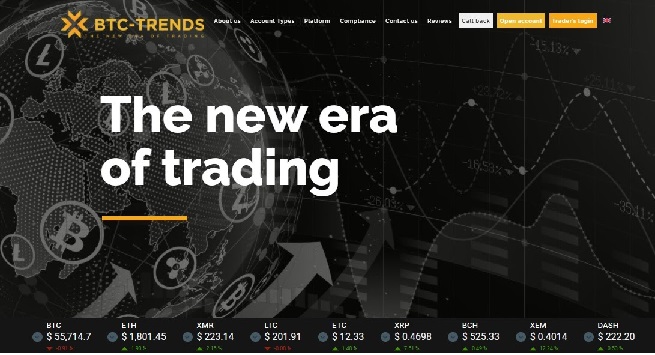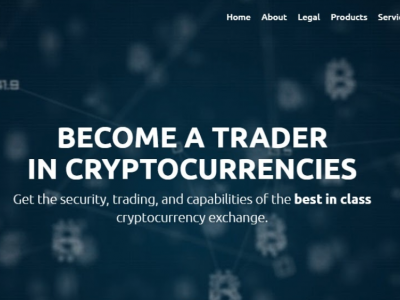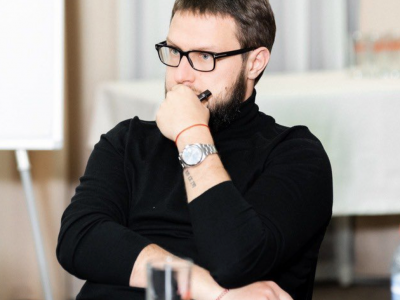The DAO, an Ethereum-based investment platform, was hacked on 17 June 2016. The unprecedented breach affected the entire Ethereum ecosystem prompting CoinFox to take a closer look at its post-DAO perspectives.
In 2014, David A. Johnston, Chairman of the Board at Factom and Managing Director of the Decentralized Applications Fund coined the so-called “Johnston’s Law” which states that “everything that can be decentralized, will be decentralized.”
The combination of decentralised applications and self-executing smart contracts has been the trademark of the ground-breaking Ethereum project. Decentralised Autonomous Organisations (DAOs) appeared to be the next breakthrough. At the same time, a much older concept, the so-called decentralised applications or dapps, and particularly those developed on Ethereum, have been a subject of a fair amount of criticism in the passing months. Even their name is now considered a problem. Thus, a dapps and custom blockchains platform Lisk announced in a recent blogpost a revision of their terminology for the benefit of users:
The name ‘Dapp’ (or dapp, DAPP, DApp or dApp) has always created confusion amongst the people. Barely anyone knows how to write or pronounce it (‘dapp’ or ‘dee-app’). Therefore, we have decided to rename the Lisk ‘decentralized applications’ to ‘blockchain applications’, or simply ‘blockchain apps or ‘apps’.
Back to the basics: Definition and terminology of dapps
In June 2014, David Johnston, Sam Onat Yilmaz, Jeremy Kandah, Nikos Bentenitis, Farzad Hashemi, Ron Gross, Shawn Wilkinson and Steven Mason co-authored a paper entitled The General Theory of Decentralized Applications, Dapps. The Emerging Wave of Decentralized Applications. At that time, they defined a dapp with the help of three essential criteria:
1. The application must be completely open-source, it must operate autonomously, with no entity controlling the majority of its tokens, and its data and records of operation must be cryptographically stored in a public, decentralized blockchain.
2. The application must generate tokens according to a standard algorithm or set of criteria and possibly distribute some or all of its tokens at the beginning of its operation. These tokens must be necessary for the use of the application and any contribution from users should be rewarded by payment in the application’s tokens.
3. The application may adapt its protocol in response to proposed improvements and market feedback but all changes must be decided by majority consensus of its users.
While bitcoin is notably the most well-developed and familiar dapp up to date, Ethereum has come to offer a slightly different path for developers. The DAO attack, however, has prompted the community to face some hard truths, such as, for instance, that despite the enormous potential and great promise, Ethereum is still at the very beginning of its way. As Jack du Rose, Founder at Colony.io, put it after The DAO attack:
Ethereum is in its infancy. Those developing dApps are working by candlelight. We have no detailed understanding of what ‘correct’ is yet. We are literally making it up as we go along. There will be mistakes, and we should think about what is best for Ethereum, its ecosystem and the better future we are working towards holistically rather than trying to claim that this isn’t Ethereum’s problem.
Challenging the challenger
In fact, Ethereum-based dapps have been criticised just as well. In March 2016, Bedeho Mender, Founder of Joy Stream, published on his Medium blog an analysis of the imminent failure of the majority of Ethereum-powered projects. A very significant point raised by Mender was the alignment of the end goals of Ethereum dapps with the technology they rely upon. Mender astutely pointed out that, given the typical objectives Ethereum dapps pursue – creating infrastructure, organisational automation, crowdfunding, IoT and gambling platforms – there is no inherent need to employ Ethereum to achieve that. Same things could be done with other crypto technologies or, in some cases, outside the digital space altogether:
Most proposed projects on Ethereum cannot point to a plausible end user benefit which is primarily enabled by being on the platform. Things like “no middlemen” and “decentralization” are not actual end user benefits, they only potentially generate benefits indirectly. Perhaps even more so than in the Bitcoin space, using the Ethereum platform seems to be a decisive end-goal for people in Ethereum projects, rather than providing a better solution to a real world problem. …The best case scenario for most of these projects is that there are end user benefits for other reasons and that Ethereum is not required to deliver them. The complexity, and cost, of doing blockchain based products will in such cases eventually drive such products off chain…
Mender’s post evoked the response of Maciej Olpinski, a blockchain and media researcher and consultant, who admitted that most of the currently existing dapps would unavoidably fail, but emphasised that the decentralised open source nature of Ethereum is what ensures that through iteration and constant development every failure will contribute to future improvements. Importantly, Olpinski also challenged the most common definition used to describe Ethereum, namely as a “world computer” and explained it instead as “a generalised platform for marketplaces where individuals can adopt various roles and freely participate in economic interactions.” Thus, Olpinski emphasised that, in the case of Ethereum, what is being exchanged in any type of interaction is a value rather than information. The platform, therefore, “opens up a new world of possibilities for exchanging value, aligning economic interests, at the global scale with people you’ve never met.” Having redefined Ethereum from the economic point of view, Olpinski revised the meaning of Ethereum-powered dapps as well:
If you’re designing a dApp for Ethereum, you’re architecting a new economic interaction rather building an app.
Trends and their victims
Back in 2015, one of the most outspoken promoters of decentralised applications David A. Johnston wrote that “D (for Distributed / Decentralized) is the new E (for Electronic).” That certainly seems to be the case within the crypto universe as decentralised equals not only disruptive and innovative but also (morally) good. On a larger scale, however, as the examples above show, a fair amount of dapp-related scepticism exists out there and what is more important, we are really far from (and not sure whether it is even possible) a scenario in which dapps get massively implemented and in which one can reasonably claim that D is the new E.
Some of the criticism dapps receive is moderate in spirit and targeting particular issues, such as the Medium blogger Matthias’ observations concerning the common misconception that dapps are superior in terms of their availability compared to centralised applications, and his analysis of the cases where dapps would experience downtime.
Others are much harsher, take for instance the creator of truthcoin Paul Sztorc. Discussing the possibility of parasite contracts, he qualified the existing Ethereum-powered dapps (in September 2015) as “laughable ideas, fraudulent misinterpretations of my own (Oracle-dependent) work, projects which misunderstand the very purpose of loans by ignoring the essential concept of liquidity and assuming that someone who needs to borrow $1 in cash is willing to front $1.50 in cash, and, believe it or not, projects whose entire website, locate-able codebase, and documentation comprises all of six sentences.”
Most recently, in June 2016, Dr Washington Sanchez wrote a post for OpenBazaar’s Medium blog making the case for “dumb contracts,” or contracts requiring human intervention and accounting for human behaviour. He explained why, despite the fact that there is a number of advantages of moving to Ethereum and moving away from bitcoin, OpenBazaar has opted out from taking such a step. He has emphasised that smart contracts “can only be made for goods or services that are digitally controlled” and that they do not represent safely “the exchange of physical goods and most services. …Once human interaction is required and factored into consideration, smart contracts become significantly more difficult to design with enough checks and balances to incentivize good behavior.”
Dr Sanchez’s observations bring us back to where we started, namely, with the precarious state of dapps in general and the related scepticism only reinforced by The DAO attack. It also recalls Bedeho Mender’s question about the usefulness of dapps. In his Visions, Part 1: The Value of Blockchain Technology, Vitalik Buterin posed the same query as central to his own blockchain research. He asked, referring to the blockchain technology: “ultimately, what is it even useful for?” Answering his own question, Buterin made his famous and rather radical claim: “there will be no “killer app” for blockchain technology.” Moreover, he argued, the lack of a killer app does not downplay the potential of the blockchain technology:
Perhaps the best analogy to this line of reasoning is to ask the following rhetorical question: what is the killer app of “open source”? Open source has clearly been a very good thing for society, and it is being used for millions of software packages around the world, but nevertheless it is still hard to answer the question. And the reason is the same: there is no killer app, and the list of applications has a very very long tail – basically, just about every kind of software imaginable, with particular emphasis on lower-level libraries that end up reused by millions of projects many times over and critical cryptographic security libraries.
Buterin’s insightful analogy between blockchain and open source suggests that the future of dapps is yet to be written. The stakes here are more horizontal rather than vertical or, in other words, the aim here is not to reach a breakthrough, but rather to collectively push the boundaries of what the blockchain technology is capable of, thus, expanding the range of its possible implementations.
Diana Bogdan
















